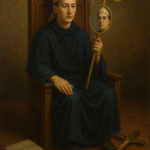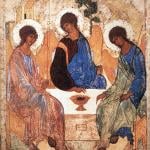London, England, Dec 21, 2014 / 01:00 pm (CNA/EWTN News).- This Advent, young Catholics in the UK are using video media to challenge their peers to “engage in the life and rhythm of the Church” and seek a deeper relationship with Christ. Made for Glory, a by-the-youth, for-the-youth faith initiative in the UK, has been releasing a video for every day of Advent. Each video features a reflection from one of several young people based upon that day’s Gospel reading. So far, they've produced 25 videos for their virtual Advent calendar. “We’re all thirsting for more of the truth!” said John Withers, team member of Made for Glory, the group spearheading the project. “Advent is packed full of themes that speak right to the hearts of young people: longing, expectance, repentance, joy,” he told CNA in a Dec. 19 e-mail interview. “What we’re doing with Made for Glory is nothing revolutionary,” Made for Glory team member Patrick Morton told CNA. “We’re simply trying to help people move from that initial encounter with Christ, into a deeper personal relationship with him.” The aim of this year’s Advent reflections, Morton explained, is to help “young people engage more with the life and rhythm of the Church by taking Christ's message in the daily Gospels and bringing it into our everyday life, helping us to live the Gospel more actively in the build up to Christmas.” “At the heart of Advent is the anticipation of Christmas itself… a call to take our faith seriously,” Morton said. “It’s a call to struggle, and work hard, and strive towards holiness; towards Christ. That’s why, in each video, we worked in this practical, apostolic element.” Withers added that repentance seems to be an Advent theme that resonates strongly with many young people. “The message of John the Baptist, which we hear again and again, is repent and believe,” he said. “I have always enjoyed reading about the struggles of the saints because it fills me with such hope; God can transform our lives.” Many young people in the UK cite Pope Benedict XVI’s 2010 visit to the country as a significant moment in their faith, Withers said. The visit “fanned a flame from the spark of faith we had been given.” Withers himself was present when the now Emeritus Pope addressed 3,000 young Catholics outside Westminster Cathedral in London. A young Catholic from a fairly small parish, Withers remembers being "blown away by the sudden reality of the universality of the Catholic Church.” Pope Francis, too, is fanning the flame of faith that Benedict started, Morton said. “If Pope Benedict built bridges for Catholics in Britain, then we can firmly say that Pope Francis has single handedly managed to make being Catholic cool.” “He’s an out-and-out evangelist, who builds bridges for Christ on foundations of friendship and trust,” he said. “He’s encouraging young Catholics to step up and be counted, to not be afraid, because when we say yes to Christ the joy of the Christian life overwhelms any doubts or fears.” Morton added that many young people are done with what the world offers them and are seeking real answers to their deepest questions. “I think that as society becomes more secular, more relativised, more seemingly absent of definitive truth, then the more passionately young people will seek the truth,” Morton continued. “Young people aren’t satisfied with the soft answer, they want the real thing, they want the truth, however challenging it may be.” In addition to being contributors to this project, Morton and Withers are also part of the team at the Vocations Centre for the Archdiocese of Southwark in London. The entire Advent video calendar can be viewed on the Made for Glory Youtube channel: https://www.youtube.com/channel/UCnpuOKqS61B7VcTe9C-BTqw Read more
















